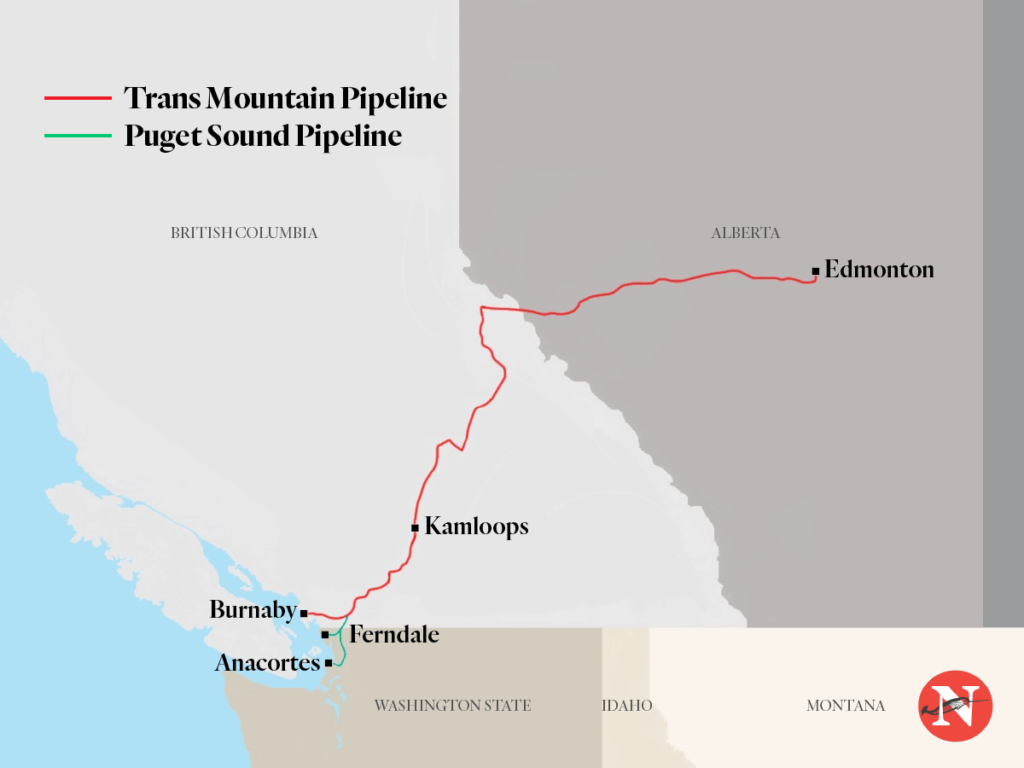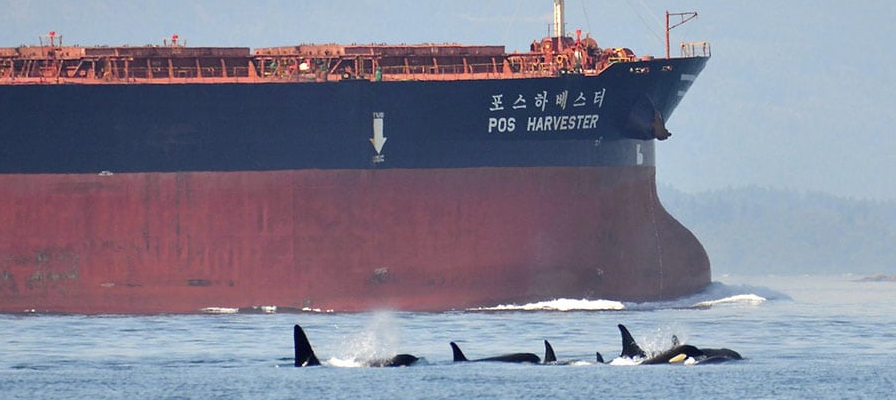On March 13, 2023, the Biden administration approved ConocoPhillip’s Willow Project — a massive oil and gas development site on Alaska’s North Slope in the National Petroleum Reserve. Despite its name, the NPR-A is a vast, ecologically vital landscape for Western Arctic residents as well as wildlife. This section of land is located just next to the Alaska National Wildlife Refuge. Willow will be the largest oil and gas extraction project on public lands today, if it proceeds as planned.
When fully operational, Willow has the potential to release 9.2 million metric tons of CO2 each year — the equivalent of adding 2 million more cars to the roads. This decision came just two weeks before the U.N.’s scientific body, the IPCC dropped its 7th and final climate change report, calling for the immediate phase down of fossil fuels to ensure a livable future at or below 1.5˚C of warming.
How Could This Impact Northwest Washington?
While this enormous oil reserve sits more than a thousand miles from Whatcom and Skagit counties, the Willow Project has a direct connection to Northwest Washington (and its refineries) as it is expected to be one of the largest domestic markets for this oil.
Northwest Washington is already facing more immediate risks from the Trans Mountain Pipeline expansion (TMX) which will result in nearly three times as much crude transport in local waters, beginning as early as early next year. Currently, the refineries at both Cherry Point and Anacortes process crude from Trans Mountain which is delivered by pipeline and then shipped through the Salish Sea in tankers. The largest increase in oil tanker traffic will depart directly from the Vancouver area and sail south through our region and out the Strait of Juan de Fuca.
In terms of Willow, with its influx of crude oil expected as early as 2028, local refineries could see pressure to expand. Even before Willow comes on line, another potential threat on the horizon to monitor is the prospect of liquified natural gas (LNG) export developing at the HollyFrontier refinery and fuel transportation dock in Anacortes, as Canada looks to further exploit the extensive Montney fossil fuel reserve in BC and Alberta.
Fortunately, Whatcom County passed groundbreaking policies in 2021 prohibiting the expansion of new fossil fuel infrastructure including piers for more oil tankers, crude transshipment facilities, new fossil fuel refineries and more. Anacortes and Skagit County have not yet assessed nor taken preemptive action to address the potential risks of these emerging fossil projects to the north– threats that include employment loss from refinery conversion to a transshipment facility, community health and safety concerns, and a massive spill in local waters that could devastate key economic sectors and marine life. While there are many factors at play in oil and gas processing and transport markets, Willow’s coming on-line later this decade could turn the pressure valve on our region up further.

For example, oil makes its way to Northwest Washington by rail, pipeline, and tanker traffic. In 2020, tanker traffic made up around 37 percent of that mix. However, by the end of 2022, tanker traffic had risen to 52 percent. ConocoPhillips already transports more than 80 million barrels of Alaska North Slope crude oil each year to refineries in Puget Sound, as well as San Francisco, Long Beach, and Hawaii, and those transports are only expected to increase with the development of Willow.
Unfortunately, oil tanker traffic could expand substantially in our region of the Salish Sea. For context, in the last quarter of 2022, Puget Sound saw 72 crude oil transfers1 pass through its refineries. However, HollyFrontier’s Puget Sound Refinery in Anacortes (formerly Shell) alone has authorization for up to 350 vessel calls a year — meaning we’ve yet to see the region reach its maximum potential for vessel traffic. Hollyfronteir already receives Conoco’s North Slope crude oil, with tankers docked there even in recent weeks. 2
Northwest Washington is already making great strides to transition to renewables, shift to electrification, and reduce (and ultimately eliminate) reliance on fossil fuels. The Willow Project isn’t even expected to be cash flow positive until 2035, and by that time, Washington will be well on its way to achieving its policy goals of 100 percent clean electricity by 2045 and a 95 percent reduction in greenhouse gas emissions by 2050.
Which is to say, by the time the Willow Project could be profitable (without taking into account the expansive externalized cost of climate change and local impacts of oil operations), Washington will be moving on from fossil fuels, making the current risks of disastrous spills in the Salish Sea and impactful vessel traffic entirely counterproductive. We know that moving fossil fuels by rail, pipeline, or tanker always comes with a risk. It’s not a matter of if a spill will happen, but when.

Taking Action to Protect our Region
Northwest Washington, can and should proactively address the Willow Project’s risks to the Salish Sea and community safety.
While President Biden’s decision to approve the Willow Project demonstrates an ongoing hurdle in the push to quickly transition off of fossil fuels, the power and momentum of organizers fighting against the project is in no way coming to a close. Several groups have already pushed forward lawsuits to halt the Willow Project, with the court denying the first injunction (though the ongoing lawsuit still stands) continuing federal-level actions are expected.
As of March 8th, across various social media platforms, hashtags related to #StopWillow had more than 650 million views, which helped to drive nearly 5 million petition signatures urging President Biden to stop the project. There is a growing base of youth voters and activists putting pressure on the fossil fuel industry, and one bad decision by the administration is not likely to stop the momentum. This is the time to put in the work to ensure current and future generations have a livable planet.
We know from decades of advocacy work to protect Northwest Washington and the Salish Sea that when action fails at the federal level, local action becomes even more critical. Now is the time for our elected officials to take action and protect our communities and the Salish Sea from the massive risks the Willow Project — and other expanding fossil fuel projects — will create. It is crucial that our elected leaders at the city, county and state-levels enact policies now to prohibit risky fossil fuel expansion in our region as a result of these gigantic projects. This is a moment we can’t afford to miss.
Sign up for RE Sources email list and opt in to Action Alerts to make sure you never miss an opportunity to speak out against fossil fuel expansion efforts that impact our region.
